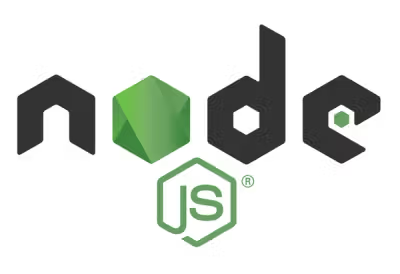
Security News
require(esm) Backported to Node.js 20, Paving the Way for ESM-Only Packages
require(esm) backported to Node.js 20, easing the transition to ESM-only packages and reducing complexity for developers as Node 18 nears end-of-life.
provide-page
Advanced tools
Provides routing and server rendering utilities via the HTML5 History API to React components.
Provides routing, automatic server-side rendering, and automatic server-side actions to React components. Use this with react-redux-provide as a simpler alternative to react-router.
npm install provide-page --save
At a minimum, you can use the following actions to trigger path changes using the HTML5 History API via the following propTypes:
pushWindowPath (String windowPath) - Uses window.history.pushState under the hood. If this is called server-side, clients with JS disabled will be redirected to the new path.
replaceWindowPath (String windowPath) - Uses window.history.replaceState under the hood. If this is called server-side, clients with JS disabled will be redirected to the new path.
And the following actions may be used both server-side and client-side. You should typically only call these actions within componentWillMount and componentWillReceiveProps. See test/components/Test.js for an example.
setHeaders (Object headers) - These optional headers will be sent to the client with SSR (server-side rendering).
setStatusCode (Number statusCode) - An optional status code to send to the client with SSR.
setDocumentTitle (String documentTitle) - Sets the document's title.
setMetaDescription (String metaDescription) - Sets the document's meta description tag.
setMetaRobots (String metaRobots) - Sets the document's meta robots tag.
setIconFile (String iconFile) - Sets the document's favicon filename.
setCssFiles (Array cssFiles) - Sets the CSS filenames to be included with the document as link elements within the head element.
setJsFiles (Array jsFiles) - Sets the JS filenames to be included with the document as script elements appended to the body element.
And the following action is mainly used in conjunction with the Form component (see below), but you may trigger it manually if for some reason you need to do that:
submitRequest (Object requestBody, String requestMethod, Boolean acceptJson)Your components may also be provided the following reduced propsTypes:
windowPath - Essentially window.location.pathname. On the server this defaults to express's request.originalUrl when createMiddleware is used (see below).
splitWindowPath - Basically windowPath.split('/'), shifted since the first item is always empty. So for example, when your windowPath is /foo/bar, this will be ['foo', 'bar']. This exists as a convenience to reduce boilerplate when rendering your routes.
headers - The headers sent to the client when using SSR and createMiddleware (see below).
statusCode - The status code sent to the client when using SSR and createMiddleware (see below).
documentTitle - The current title of the document.
metaDescription - The current description of the document.
metaRobots - How robots should treat the document. Defaults to index,follow.
iconFile - The current favicon for the document. Defaults to /static/favicon.ico.
cssFiles - The current CSS files for the document.
jsFiles - The current JS files for the document.
requestBody - Derived from request.body when used with createMiddleware (see below).
requestMethod - Derived from request.method when used with createMiddleware (see below).
acceptJson - Derived from request.headers.accept (true if indexOf('json') > -1) when used with createMiddleware (see below).
formData - Derived from requestBody and matching requestBody._formId to the component's props.formId when used with createMiddleware and the Form component (see below).
A couple of notes:
Upon initializing the store, replaceWindowPath is automatically called which can be used to properly initialize the state of any other providers who make use of this provider's REPLACE_WINDOW_PATH action type.
When navigating through history (i.e., when the popstate event is triggered on the window), if a windowPath is present within the window.history.state, the REPLACE_WINDOW_PATH action type will be dispatched on top of the window.history.state (stored action) to indicate that the window.location.pathname has been changed; or if a documentTitle is present for some reason, the SET_DOCUMENT_TITLE action type will be dispatched instead.
Link - A simple wrapper around <a { ...props } />, which intercepts the click event to prevent a full page reload when JavaScript is enabled and triggers the pushWindowPath action so the app can be updated accordingly; and of course if JS is disabled, since all your rendering logic depends on your page provider's store's state (using request.originalUrl on the server), it all renders exactly the same as it would if JS was enabled client-side. Simply treat this as you would any other <a/> element.
Form - A simple wrapper around <form { ...props } />. Combined with createMiddleware (see below), it intercepts the onSubmit event and allows all of your actions to be automatically triggered on the server, whether or not JS is enabled. If JS is enabled, it will trigger the action on the server via XMLHttpRequest. All you need is a formId prop combined with an onSubmit prop that accepts formData as a second argument. The formId prop should exist within both the Form instance and the component instance rendering the form. See bloggur's EntryCreator component for a full example.
createMiddleware (Object options) - Returns a function that can be used as express middleware and will do the following for you, server-side:
Automatically render the state of the app depending on some defaultProps ({ providers, providedState }), the request ({ originalUrl: windowPath, method: requestMethod, body: requestBody }), and optional formData (see the Form component above).
Respond with a full document string describing the current page - i.e., headers, status code, title, meta, favicon, js files, and css files - all controlled by your React components.
Automatically wait for asynchronous actions before rendering.
When used with the Form component (above), it will automatically trigger actions on the server for clients with JS disabled, or if JS is enabled, the actions will be triggered server-side via XMLHttpRequest and the updated state of the server's stores will be returned.
Automatically redirect clients with JS disabled to a new URL when the pushWindowPath or replaceWindowPath actions are called.
Automatically optionally send a 408 (timeout) status when a request takes too long.
The options object passed to createMiddleware should take the following shape:
defaultProps - Extended to contain info about the request and then passed to your renderToString function. See bloggur/src/defaultProps.js for a full example.
renderToString (Object props) - This function should typically use react-dom/server's renderToString method under the hood to render your app to a string. See bloggur/src/renderAppToString.js for a full example.
renderDocumentToString (String html, Object providedState, Object clientState) - Optional function that returns the string representation of the entire document. The providedState and clientState objects come form the getProvidedState and getClientState functions below. See defaultRenderDocumentToString.js as an example.
getProvidedState - Optional object or function that should return the providedState prop passed to both renderToString and renderDocumentToString. Defaults to all of your providers' stores' states combined into a single object. If it's an object, it will use redux-replicate/src/selectKeys.js. If it's a function, your providers' stores' states combined into a single object will be passed to it. See bloggur/src/middleware.js for a full example where we concatenate the selected theme's files with the cssFiles and jsFiles reducers so that they're included as link and script tags when the document string is rendered.
getClientState - Optional function that should return the object to be replicated to the client. Defaults to the providedState. If it's an object, it will use redux-replicate/src/selectKeys.js. If it's a function, the providedState will be passed to it.
maxRenders - Defaults to 2. After the first render, the requestMethod and requestBody reducers are set to GET and an empty object, respectively. This is to ensure that actions don't get triggered twice as a result of logic depending on data submitted via some Form and so that the app may be rendered correctly and returned within the same request. Note: If you find yourself needing to render more than twice, you may want to reconsider your design.
maxResponseTime - Default to 2000 (milliseconds). Sends a 408 status code if this timeout is reached. Setting this to 0 will disable it.
See the following modules within bloggur:
providers/entries.js - A combinedProvider that depends on the current windowPath.
server.development.js - Passing hot reloadable middleware to express.
server.production.js - Passing production-ready, bundled middleware to express.
middleware.js - Using createMiddleware to create middleware specific to the app.
components/EntryContents.js - A component that renders different components based on reducers from the entries provider and sets the documentTitle and statusCode accordingly.
components/EntryCreator.js - A component that triggers an action to create an entry on both the client and the server using the Form component.
react-routerreact-router and others like it are all fantastic libraries, but with the providers paradigm, there is no reason to use them. All you have to do is use provide-page like you would any other provider and keep your routing logic within your components' render methods. I think you'll find that things actually get simpler while you'll also have more control and flexibility at the same time. There's no need to try to put everything within your initial call to render when mounting the app, as that can quickly get out of hand for large, complex applications. All you need is render(<App providers={providers} etc />).
The equivalent of router.transitionTo is to provide the pushWindowPath and/or replaceWindowPath actions to your components and use them wherever necessary.
As for code-splitting, it should be implemented the same way themes are split. See provide-theme for an example of how that's done. A code-splitting tutorial using provide-page is coming soon!
FAQs
Provides automatic server-side rendering and actions (regardless of whether or not client has JavaScript enabled) to React components. Use in conjunction with `provide-router`.
The npm package provide-page receives a total of 9 weekly downloads. As such, provide-page popularity was classified as not popular.
We found that provide-page demonstrated a not healthy version release cadence and project activity because the last version was released a year ago. It has 1 open source maintainer collaborating on the project.
Did you know?

Socket for GitHub automatically highlights issues in each pull request and monitors the health of all your open source dependencies. Discover the contents of your packages and block harmful activity before you install or update your dependencies.

Security News
require(esm) backported to Node.js 20, easing the transition to ESM-only packages and reducing complexity for developers as Node 18 nears end-of-life.

Security News
PyPI now supports iOS and Android wheels, making it easier for Python developers to distribute mobile packages.

Security News
Create React App is officially deprecated due to React 19 issues and lack of maintenance—developers should switch to Vite or other modern alternatives.